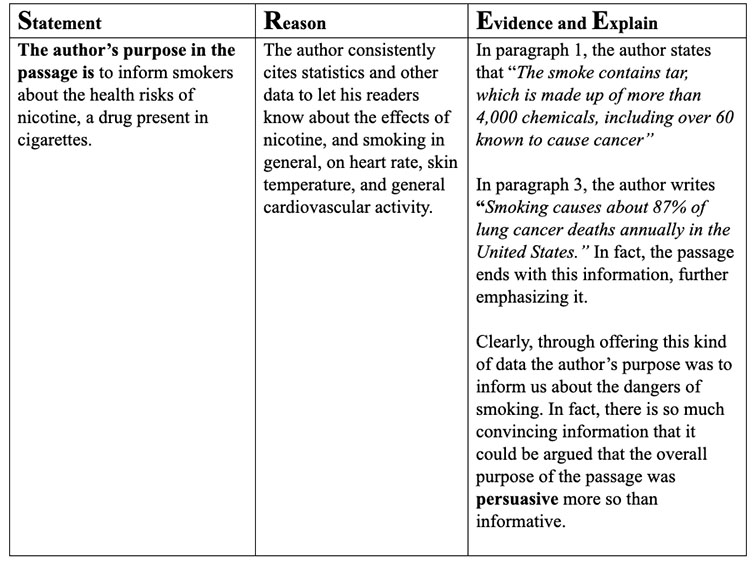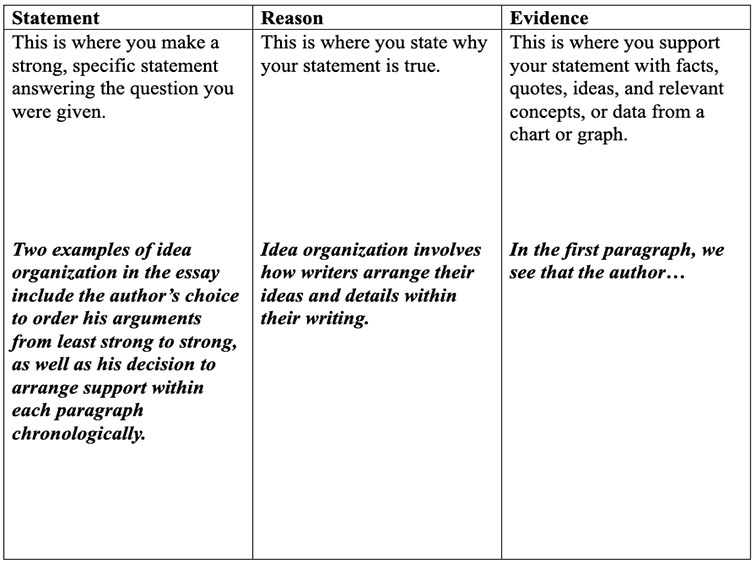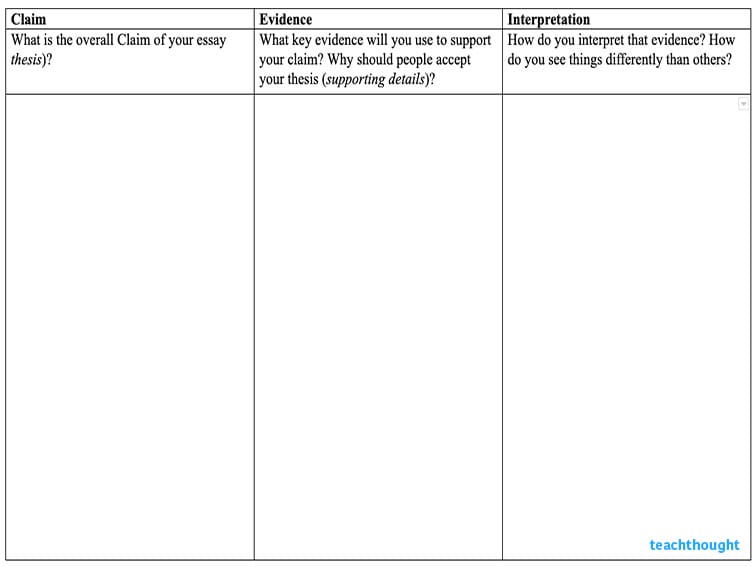
SRE And CEI–Easy To Use Writing Strategies For The Classroom
by TeachThought Staff
As a teacher, I learned quickly how important writing was and as a teacher who used writing to teach, I quickly learned how important writing strategies were.
Besides clarifying audience and purpose (who you’re writing to and why), SRE and CEI were two of the best writing strategies I was able to offer my students (I taught ELA, grades 8-12), providing students with a basic template or structure to guide their writing–and in a pinch, their reading as well.
SRE: A Simple Writing Strategy For The Classroom
SRE is initialism representing three central tenets of arguing and argument making (and thus writing): Statement, Reason, Evidence (or Example, Explain, or Expand)
Writing strategies are critical for writers of all abilities during every stage of the writing process and SRE is one strategy that is useful in several places and ways. In brief, ‘SRE’ suggests students structure their writing around the science and philosophy-friendly ‘claim–>support’ format. Growing writers can use this during pre-writing to formulate and clarify their claims and reasons supporting those claims, or it can be used to literally structure the paragraphs themselves wherein the ‘Statement’ is the topic sentence, which is followed up by the ‘Reason’ and expanded upon in the ‘Evidence, Explain, Expand.’
Statement: A clear and important claim about a relevant idea
This can be simple, such as “Strawberry is better ice cream than vanilla’ or more complex, such as “The effect of social media on human discourse is worthy of our collective scrutiny,” etc. A few statement stems include ‘It is clear…’, ‘The data shows…,’ and ‘I believe….’
Reason: The reason you believe that/believe that claim is valid
Like the Statement, the Reason doesn’t have to be overly-complex, either. In fact, when teaching developing writers, it can be useful to simplify the argument in order to focus on the structure of the argument (SRE being an example of one kind of argument structure). Even in the highly-subjective ice cream example above, SRE can help student writers learn to defend their thinking with rational explanations of even the most trivial topics.
Some ‘Reason’ stems include ‘This is because…,’ or ‘Due to….’
Evidence/Example/Explain/Expand: A compelling example to support the above claim or an explanation and expansion of the claim that increases the chance that the reader will accept it logically
The ‘E’ part is where, depending on what’s being written and why, the writer can provide evidence or example to support a claim, or simply further ‘explain’ the claim itself.
Note, some writers like the separation between the ‘R’ and the ‘E’ but I found that it confused others. In this case, I’d simplify it again, often to something like “Statement & Support” or ‘State and Defend’ or ‘State and Prove’ where students would simply make a statement and support, defend, and/or ‘prove’ their statement to an imagined willing but skeptical audience.
You can find more critical thinking stems here and here’s an example of SRE being used as a writing strategy–and a kind of broad ‘reading strategy’ as well.

SRE can also be used to guide ‘short answer’ and ‘open response’ items. One example is given below:

CEI As A Writing Strategy
‘C.E.I.’ is an initialism referring to ‘Claim, Evidence, Interpretation,’ and like its simpler cousin SRE, CEI can be used in a variety of ways, from paragraph structure to the process of pre-writing. This can apply to formal or informal writing, and is helpful for writers of all levels, an organizer that basically asks the writer “What are you claiming, how are you proving it, and how might you see things differently than others?”
I always considered it more difficult to use for some writers because of the ‘Interpret’ part. That’s a scary word for some students as it demands a lot, cognitively (much in the same way the writing process itself does). However, for many students, the ‘Interpret’ was the ‘part’ where their writing really took off because it required them to analyze and explain and defend and relate and connect ideas–which all moves well simply giving an opinion and giving data to support the opinion.

Claim: A clear and important claim about a relevant idea
Evidence: Data, textual evidence, or examples that support the claim
Interpret: An thoughtful analysis of the evidence that clarifies and strengthens its support of the claim
Like SRE or SS, CEI can be used to as pre-writing to guide the general idea development of a paper where students clarify what they believe and how they intend to prove it. It also can be used as a paragraph structure strategy where the ‘Claim’ is the topic sentence, and the Evidence and Interpretation make up the balance of the pragraph.
There’s a lot more to be said about these strategies, I know. More examples across content areas, graphic organizers, sentence stems, and more. I’ll try to get to that soon. In the meantime, I hope that what’s here is useful and that SRE, SS, and CEI prove to be helpful writing strategies in your classroom.